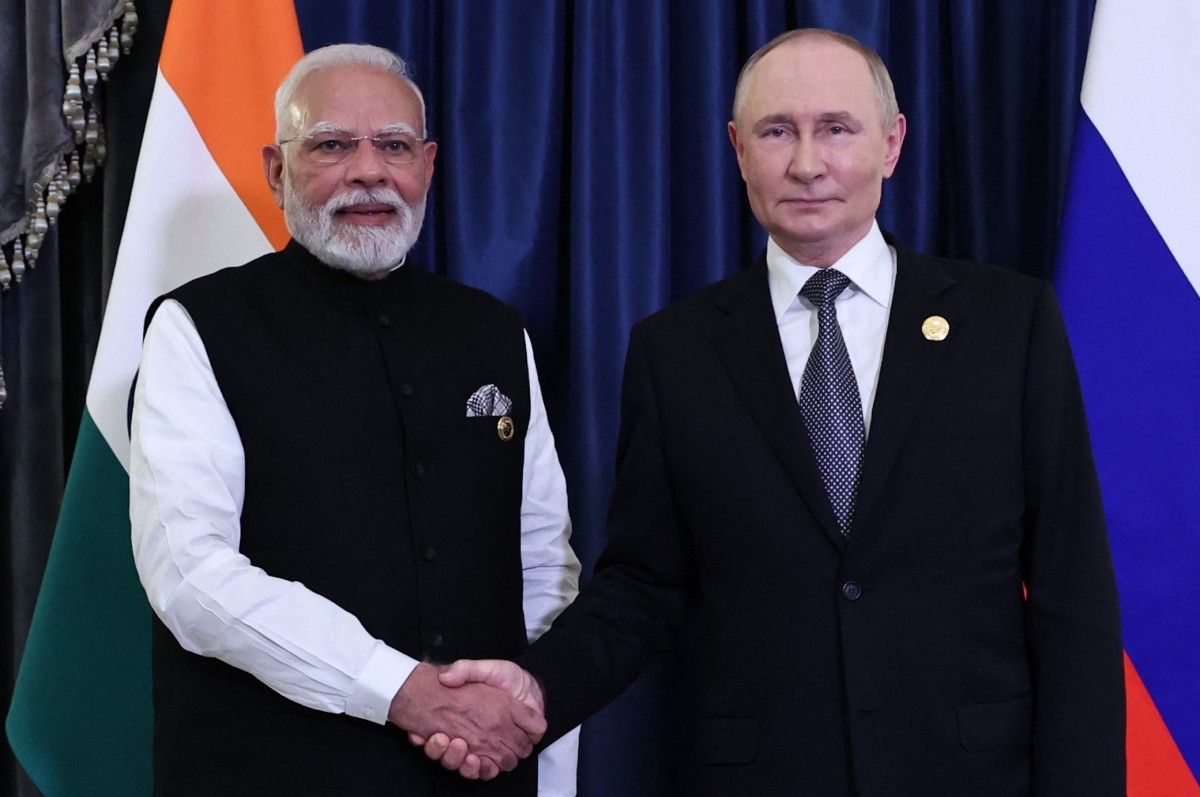Modi-Putin Summit: India Likely To Sign Deal To Build Ice-Class Vessels With Russia In $100B Trade Push

On November 18, Nikolai Patrushev, Chairman of the Maritime Board of Russia and a high-ranking aide to President Putin, called on Prime Minister Narendra Modi as part of preparations for the 23rd India-Russia Summit, scheduled for early next month in New Delhi.
President Putin last visited India in December 2021 to attend the 21st edition of the annual summit.
Following his meeting with Nikolai Patrushev, Prime Minister Modi posted on X.com: “Pleased to receive Mr. Nikolai Patrushev, Aide to the President and Chairman of the Maritime Board of Russia. We had productive discussions on cooperation in the maritime domain, including new opportunities for collaboration in connectivity, skill development, shipbuilding, and blue economy.”
Patrushev’s meeting with the Indian Prime Minister and the latter’s X post following the meeting suggest that India and Russia are poised to sign a major cooperation agreement covering the Maritime domain during the forthcoming summit.
Russia and India have been negotiating to boost trade by developing the Eastern Maritime Corridor (EMC) and the Northern Sea Route (NSR) through investments in port infrastructure and shipbuilding, particularly the construction of ice-class tankers to transport oil. Also, to train Indian crews to operate cargo ships safely in the Arctic Ocean, negotiating ice blocks and frozen waters.
Northern Sea Route (NSR)
The NSR stretches about 5,600 km (≈3,500 miles) through the Arctic Ocean from Murmansk near Russia’s border with Norway eastwards to the Bering Strait near Alaska.
The route is an alternative to the Suez Canal and is 40% shorter. It passes through challenging Arctic waters that are navigable mainly during ice-free months or with the assistance of Russian nuclear and diesel icebreakers.
With climate change reducing sea ice, the NSR is becoming increasingly navigable and emerging as a more economically attractive alternative to the Suez Canal.
Reduced shipping costs through the NSR, making Russian resource exports – Crude, LNG, and Coal – more competitive, particularly to large consumer countries like China and India.
Currently, annual cargo volumes through the NSR are fluctuating around 35 to 40 million tons. Russia had planned to more than double the amount to 80 million tons by the end of 2025.
However, the target is unlikely to be achieved. Based on current data, the total will not exceed 45-46 million tons. Russia’s target for 2031 is 200 million tons.
To facilitate volume growth and transform the NSR into a major international shipping corridor, Russia is seeking partners to invest in support infrastructure, nuclear icebreakers, and ice-class cargo ships. Currently, the number of ice-class ships is insufficient to achieve the target of 200 million tons.
Icebreakers, which sometimes feature nuclear propulsion, are built to cut through thick arctic ice to keep open navigation routes even during winters, while ice-class cargo ships are designed to negotiate thinner ice and floating blocks of ice safely.
To augment its infrastructure for constructing ice-breaking vessels, Russia is seeking partnerships with Indian and Chinese shipbuilders.

Eastern Maritime Corridor (EMC)
The Eastern Maritime Corridor (EMC), also known as the Chennai-Vladivostok Maritime Corridor, connects Chennai Port in India with Vladivostok in Russia’s Far East.
Spanning approximately 5,600 nautical miles (10,300 km), the corridor links India to the NSR. The EMC, NSR combination reduces cargo transit times from the traditional 40 days via the Suez Canal to about 24 days, bypassing congested chokepoints and avoiding West Asian regions prone to geopolitical instability.
The corridor was first proposed during PM Modi’s 2019 visit to Vladivostok. Its relevance surged when India’s trade with Russia went through the roof with over 200% YoY growth in early 2024. The importance of the route for energy security and for diversifying the supply chain became obvious.
India’s Interest in Constructing Ice-Class Ships
In September 2023, India proposed to Russia that they jointly construct non-nuclear icebreakers at Indian shipyards.
Jointly constructing ice-class ships would be mutually advantageous for both countries. It would allow India to leverage its robust shipbuilding infrastructure, while Russia would leverage its extensive experience in building icebreakers and ice-class ships.
Joint shipbuilding could become another pillar of strategic partnerships between the two nations, alongside defence, space, and nuclear energy cooperation.
Equally important, it will reduce vulnerability to US-orchestrated trade sanctions that impinge on India’s sovereignty and lower the costs of imported Russian resources.
During the Global Maritime India Summit 2023 (October 17-19 in Mumbai), Russia invited India to participate in the Northern Sea Route (NSR).
Vladimir Panov, Rosatom’s special representative for Arctic development, invited Indian companies to collaborate on NSR development, emphasizing partnerships in shipbuilding, port infrastructure, digital services, and sustainable Arctic shipping.

Joint Working Group on NSR
Following the 22nd India-Russia Annual Summit on July 9, 2024, in Moscow, India and Russia established a Joint Working Group (JWG) on the Northern Sea Route (NSR) under the India–Russia Intergovernmental Commission on Trade, Economic, Scientific, Technological, and Cultural Cooperation (IRIGC-TEC).
The JWG aims to enhance bilateral maritime ties, focusing on Arctic navigation and trade routes. It has met twice so far.
During the first meeting on October 10, 2024, in New Delhi, discussions centered on cargo transit, joint Arctic shipbuilding projects, and training Indian seafarers for polar navigation.
A draft Memorandum of Understanding (MoU) was prepared to formalize the partnership. The second meeting, held on July 3, 2025, in Murmansk, built on the groundwork of the first meeting.
With India and Russia targeting $100 billion in bilateral trade by 2030, the imperative to exploit the potential of the EMC and NSR through collaboration to build infrastructure and ice-class ships is clear.
As such, India and Russia will likely firm up a partnership during President Putin’s forthcoming visit to India.
- Questions and Answers
- Opinion
- Motivational and Inspiring Story
- Technology
- Live and Let live
- Focus
- Geopolitics
- Military-Arms/Equipment
- الحماية
- Economy
- Beasts of Nations
- Machine Tools-The “Mother Industry”
- Art
- Causes
- Crafts
- Dance
- Drinks
- Film/Movie
- Fitness
- Food
- الألعاب
- Gardening
- Health
- الرئيسية
- Literature
- Music
- Networking
- أخرى
- Party
- Religion
- Shopping
- Sports
- Theater
- Health and Wellness
- News
- Culture

